Chicken Breeds by Egg Color
Inside: Learn what color of eggs many popular chicken breeds lay.
Are you looking to add a few new chicken breeds to your flock? If so, you might want to choose breeds based on egg color.
Chickens can be purchased that lay a variety of egg colors, from pinkish brown to white to blue. This post contains a printable egg color chart that you can take to the feed store with you so that you can choose different chicken breeds that will give you a beautiful mixed-color egg basket and add some variety to your backyard or homestead flock.
Affiliate Disclosure: Please note that some of the links in this article may be affiliate links and I may receive a small commission if you purchase something through a link. It will not change your cost. As an Amazon Associate, I earn from qualifying purchases. For more information, see my disclosures page.)
Brown Egg-Laying Chicken Breeds
There are lots of brown egg-laying breeds. It can be difficult to choose a few favorites. So while this list definitely isn’t all-inclusive, it can give you an idea of some good brown egg layers.
And remember, there are different shades of brown eggs. Some breeds lay light brown almost pink eggs and others lay dark brown eggs.
Australorps
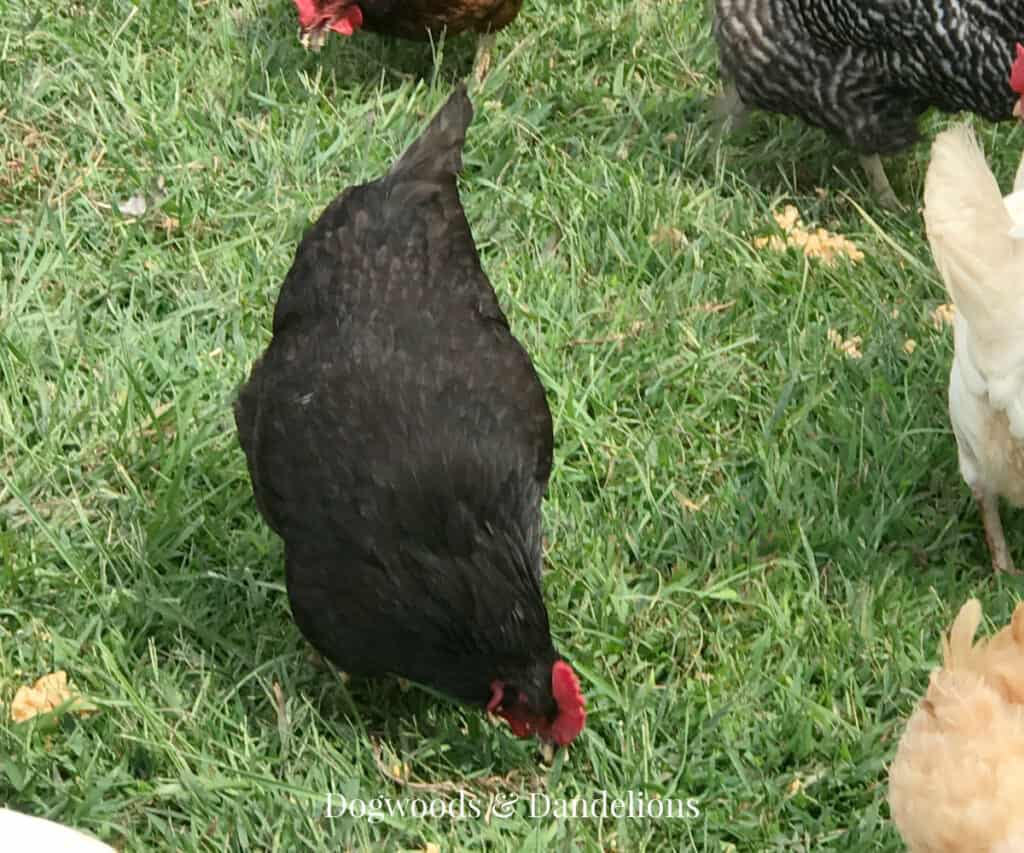
Black Australorp hens are friendly and make great pets. Australorps have black feathers that look almost green in the sunlight. They are a large, quiet breed perfect for a small coop in a neighborhood.
Australorps will provide you with a steady supply of brown eggs all year long. They lay about 250 eggs per year. It is said that an Australorp hen holds the record for laying the most eggs (364) in a single year!
Brahmas
Brahmas are a large breed that can grow close to 10 pounds at maturity. They have lots of downy feathers on their body and feathers on their feet and legs. This is a quiet breed suitable for a neighborhood.
Brahmas are an excellent chicken for colder climates due to all their feathers, but they aren’t a good choice for warm climates. They have very docile personalities and don’t tend to stray far from their home.
Due to their size, they aren’t likely to fly over all but the lowest of fences. A Brahma hen will lay over 200 eggs per year.
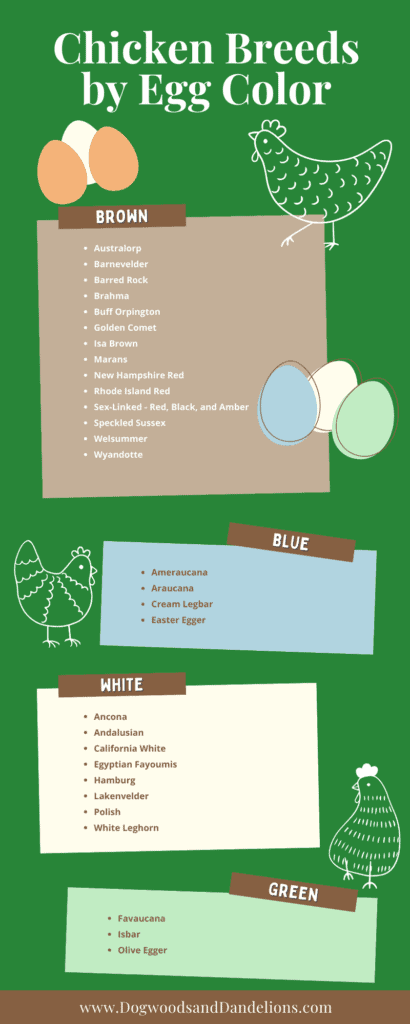
Barnevelder
Barnevelder chickens can lay 3-4 dark brown eggs each week (150-200 per year). They often lay throughout the winter and are a good choice for a family with small children since even the roosters are usually docile.
They love to free-range but can handle confinement. They are hardy birds and their friendly personalities make them an excellent choice for backyard chicken keepers.
Barred Rock
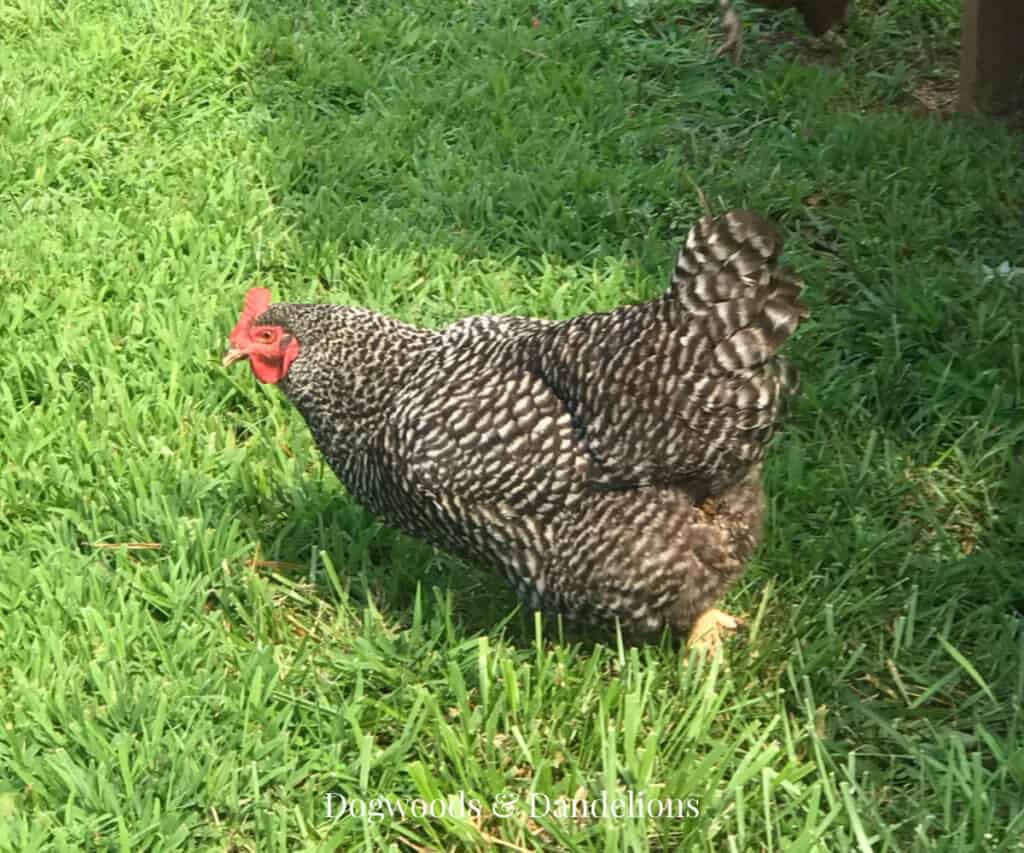
Barred Rock chickens (also called Barred Plymouth Rock) are black chickens with white “bars” on their feathers, hence the name. They lay light brown eggs and are generally fairly quiet birds so they are a good choice for a backyard flock.
While most people claim Barred Rocks are a friendly, docile breed, the 2 we raised were the meanest chickens we’ve ever had. I’m guessing we just got 2 with bad genetics, which is always possible no matter which breed you choose. Each Barred Rock hen will lay about 200 eggs per year.
Buff Orpington
Buff Orpingtons are a light brown “buff-colored” chicken that makes a great addition to your flock. They are mid to large-sized chickens that lay well (200-280 eggs per year), even through the winter.
Orpingtons are considered a dual-purpose breed meaning they lay eggs well, but they are also meaty enough to butcher if you so choose.
Buffs are generally a quiet breed so they work well in a neighborhood. They lay light brown eggs and some have said they are the “golden retriever” of the chicken world because they are so friendly.
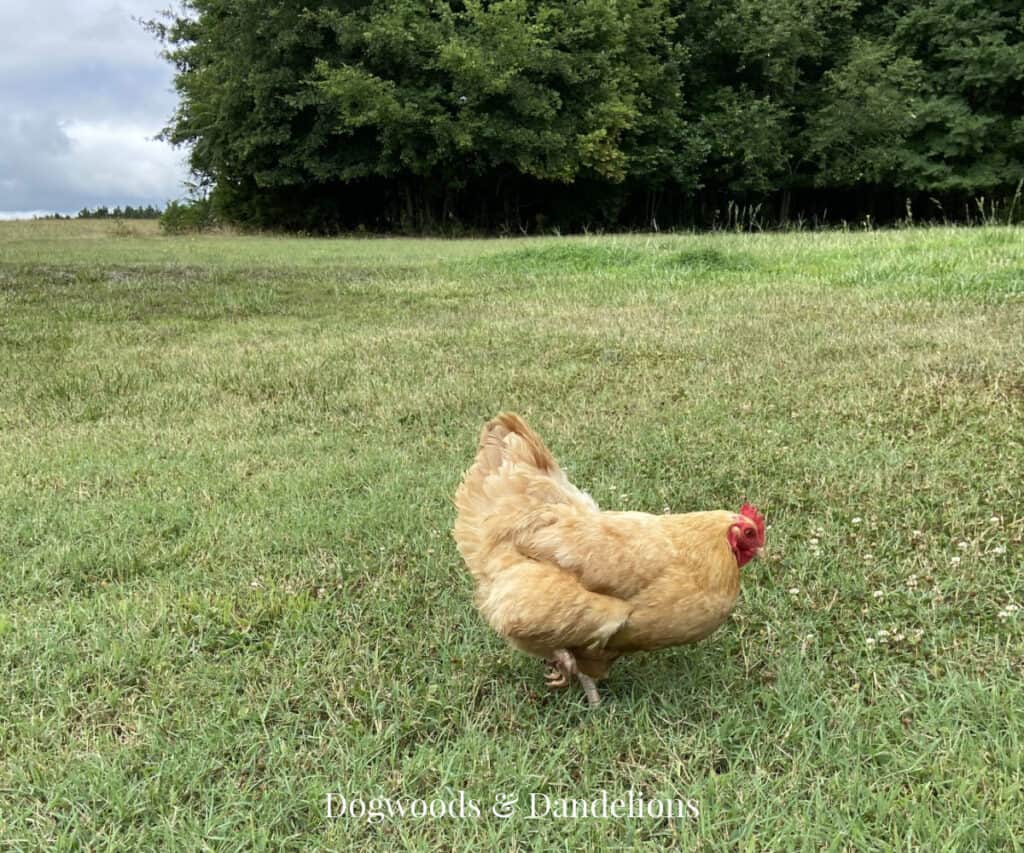
We have had quite a few Buffs and they have been a great chicken for our flock. We have one, Thelma Lou, shown in the picture above, that will actually come to you if you say her name.
Golden Comet
Golden Comets are a cross between White Leghorn chickens and Rhode Island Red chickens. They are an excellent choice for the chicken coop because they lay a lot of eggs – up to 330 a year.
This is a popular breed for small farms that want to sell eggs since they lay so well but they are great chickens for the backyard flock too. However, the trade-off for their high egg production is that they often don’t live as long as other breeds.
Isa Brown
Isa Browns are good layers of large brown eggs. This is another cross between a White Leghorn and a Rhode Island Red chicken.
They are a friendly breed so they make a great choice for first-time chicken keepers and they handle confinement well. They aren’t a good chicken though if you plan to breed them as the offspring can be prone to kidney ailments and won’t necessarily be like their parents.
Isa Browns were bred to lay lots of eggs (300+ a year) but this also comes with pitfalls. Many Isa Browns develop illnesses after 2-3 years. So if you want chickens that live a long time, this is probably not the breed for you.
Marans
The Marans breed actually has several varieties but the most popular is the Black Copper Marans. They are prized for their dark chocolate-colored eggs.
They aren’t necessarily the friendliest dark brown egg layers, but they will do fine in a backyard if you aren’t looking for pets. Most Maran hens will lay about 200 eggs per year.
New Hampshire Red
New Hampshire Red chickens are great dual-purpose birds for a backyard flock. They are similar to Rhode Island Reds with their brownish-red feathers and single combs.
New Hampshire hens tend to go broody but they make excellent mothers. The hens lay approximately 200 light brown eggs per year.
Rhode Island Red
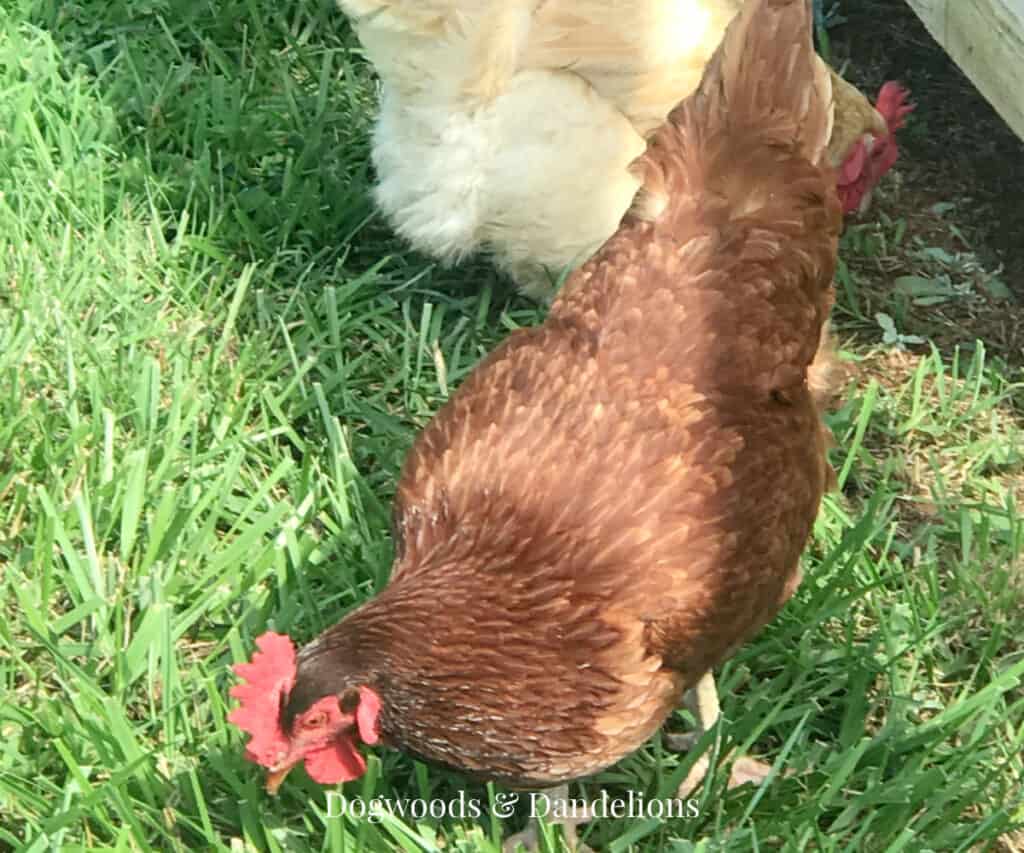
Rhode Island Reds are an outstanding breed for the backyard chicken keeper. They are a dual purpose breed that is hardy in cold climates but they are actually a good choice for warm climates too.
Rhode Island Reds have beautiful dark, rusty brown feathers and they lay lots of brown eggs, 200-300 per year. The one downside to this breed is that the roosters tend to be quite aggressive so they may not be the best choice if you have small children.
Sex-Linked Chickens
Most sex-linked chickens lay brown eggs. Red Sex-Linked, Black Sex-Linked, and Amberlinks are all sex-linked chicken breeds. (A sex-linked chicken means that you can tell when the chick is born whether it is a rooster or a hen by the color of its feathers or some other identifying trait.)
Red and black sex-linked chickens lay large brown eggs. Amberlinks are a small to medium breed with medium brown-colored feathers that lay medium-sized brown eggs. They are all good layers and lay quite a few brown eggs each week. They usually lay between 250-300 eggs a year.

One reason many people choose sex-link breeds is that when you purchase your chicks, you can be reasonably sure you are getting all hens.
This is an added bonus if you keep chickens in a neighborhood that doesn’t allow roosters. Then you don’t have to worry about what to do with a rooster should you accidentally get one.
Speckled Sussex
Speckled Sussex chickens are good egg layers of large brown eggs. They tolerate cold weather well so they are an excellent choice for cold climates.
The Speckled Sussex make great mothers and are good foragers so given room to free-range, they can keep food costs down. Most hens will lay about 200-240 eggs per year.
Welsummer
Welsummer chickens produce eggs that are a dark brown color, sometimes with brown speckles. They tend to be a noisy breed and aren’t usually very good mothers.
A Welsummer hen will lay approximately 150-250 eggs a year.
Wyandotte
The Wyandotte chicken is a beautiful chicken with several different varieties. I personally think the Golden-Laced Wyandotte is one of the prettiest chickens around.
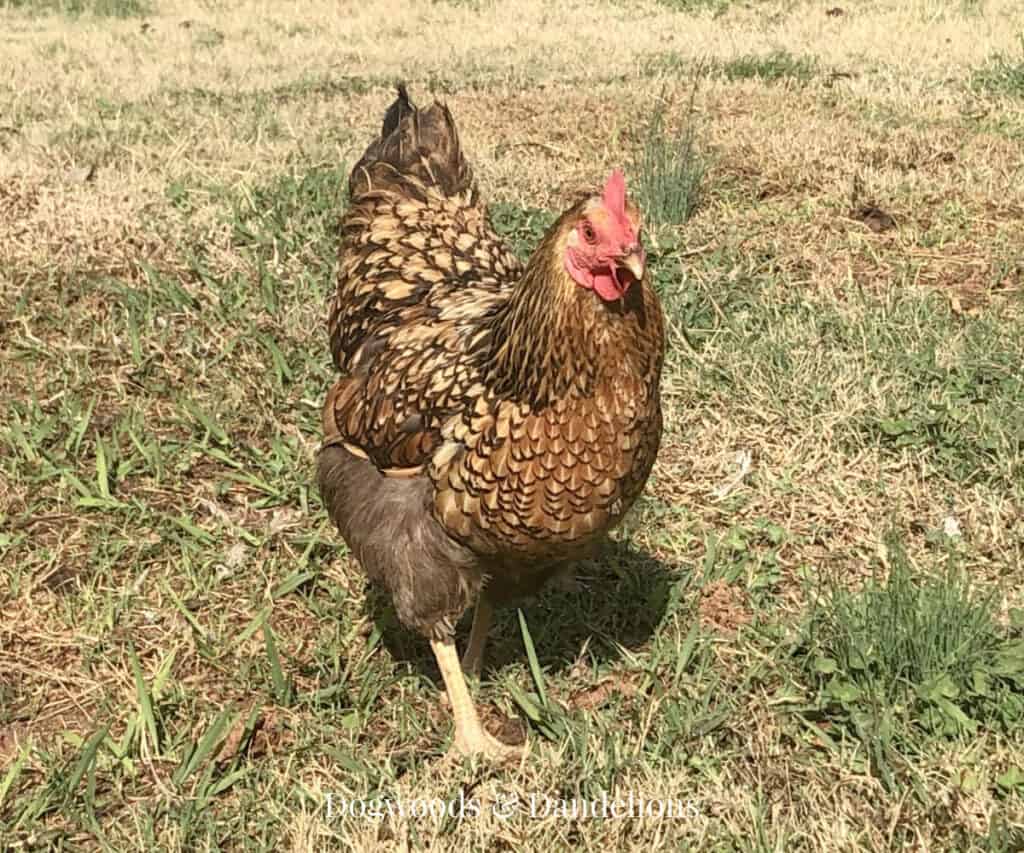
They lay about 4 eggs per week (200 per year) according to most sources. However, the Wyandottes in our flock have laid 6-7 eggs per week. The only breed that we’ve kept that has laid more eggs is the White Leghorn!
I can’t say enough good things about this breed. They tend to be friendly birds and are definitely a good choice for your backyard flock.
Blue Egg Laying Breeds
There aren’t nearly as many blue egg laying breeds as brown layers, but there are several different breeds that make great layers for your flock.
Ameraucana
Ameraucana chickens have a unique appearance with their beards and muffs and pea combs. they tolerate cold weather well. Each chicken will usually lay about 3-4 eggs a week (approximately 200 a year).
They are generally a quiet breed so they work well in a suburban setting but they don’t tolerate confinement well so they will do better if allowed to forage.
Don’t confuse Ameraucanas with Americanas or Americaunas which are usually just Easter Eggers being marketed under different names.
Araucana
Araucana chickens are a breed developed in Chile that lay beautiful blue eggs. A true Araucana chicken doesn’t have a tail but will have ear tufts that stick out from the side of its face.
Because of several genetic factors, most hatcheries in the U.S. don’t sell Araucanas. They are difficult to breed because of the lack of tail feathers. (If you find Araucana chicks for sale for just a few dollars, you can bet they aren’t true Araucanas.)
Cream Legbar
Cream legbars are a blue egg laying variety with various shades of gray and white feathers and have crests on their heads. The hens will lay about 200 eggs a year.
These blue egg layers are a relatively new breed, but they are gaining popularity in the United States. They tend to be able to evade predators well and prefer to be able to forage for some of their food.
They don’t take well to confinement and can become difficult to handle if not allowed an adequate area to roam.
Easter Egger
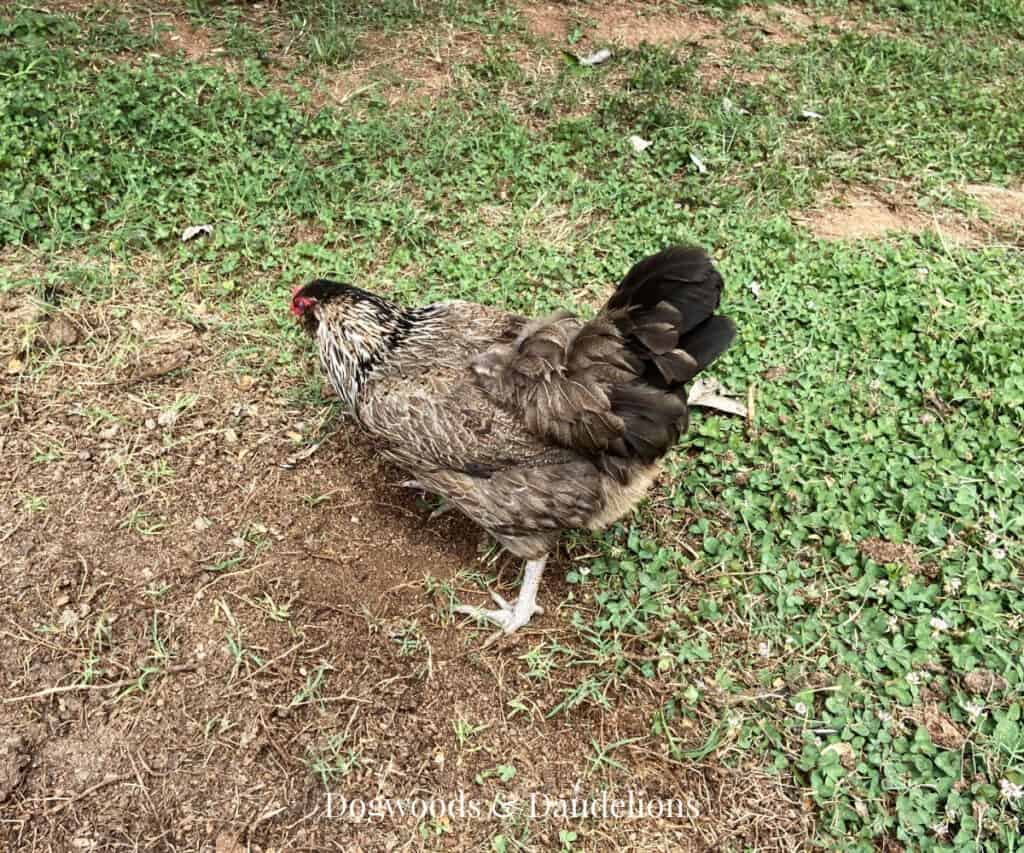
Easter Eggers are not really a true chicken breed. They are actually a cross between Araucanas and any number of other breeds.
While some consider them the “mutts” of the chicken world, they are great chickens for a backyard flock as they are generally good egg layers.
Since they are a hybrid chicken breed you never know exactly what the Easter Egger chickens will look like. Some have muffs, some don’t. They come in a variety of different colors ranging from gray to brown to pure white.
Easter Eggers are a smaller breed so while you can save a bit of money on feed they don’t make the best meat birds.
White Egg Layers
Surprisingly, there aren’t as many white egg laying breeds as there are brown egg laying chickens. Most white grocery store eggs are from one breed of chicken – White Leghorns.
And while this is definitely a good breed for the backyard flock, there are quite a few other breeds that lay white eggs as well.
Ancona
Ancona chickens originated in Italy and despite their mostly black plumage, they lay white eggs. This is another of the small chicken breeds similar to Leghorns.
Ancona chickens lay about 220 eggs per year but they are known for laying throughout the winter. They are a hardy breed but can be a bit flighty.
Andalusian
The Andalusian breed was developed to have blue feathers which is the result of crossing birds with white plumage with black feathered birds. However, not all Andalusian chickens will exhibit the blue trait.
This breed tends to be good layers with little tendency to go broody. They feather out quickly and start laying eggs early, but they are flighty and do not like confinement. Andalusians are better suited to warm weather than extreme cold.
An Andalusian hen can be expected to lay about 150 eggs per year.
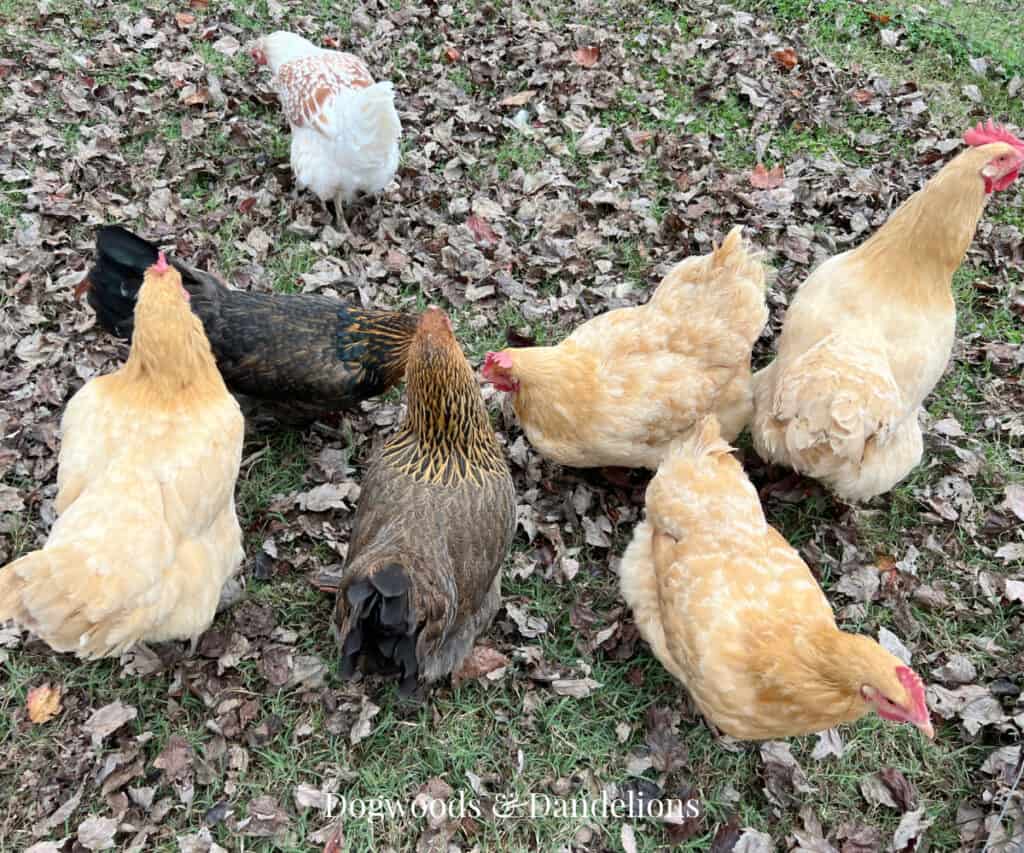
California White
The California White breed is a cross between a White Leghorn hen and a California Grey rooster. The hens are said to outpace even White Leghorns in the number of eggs they lay, laying upwards of 300 per year.
They can handle being “cooped up” so they are a great choice for the backyard chicken keeper that doesn’t have a lot of room to let their flock roam. California White chickens are very hardy and tend to live quite a while.
They are active birds that usually start laying eggs a bit earlier than many other breeds.
Egyptian Fayoumi
Egyptian Fayoumi chickens are a tough breed with good heat tolerance. The head and neck are generally white while the body feathers are black with white bars.
The hens are very fertile and the eggs have a high hatch rate so they are an excellent bird to breed. The typical hen will lay between 150 to 200 small white eggs per year. The small size of this breed means it isn’t usually well-suited as a meat bird.
Egyptian Fayoumi’s have high disease resistance and are very adaptable though they will do best if allowed to free range.
Hamburg
Hamburg chickens are a robust, hardy breed that lay between 120-220 small, white eggs per year. They are very good at evading predators, but are flighty and like to roost in trees.
They can be noisy and don’t like to be confined so this breed is probably not the best if you live in close proximity to neighbors. They also prefer to be with other Hamburg chickens so they don’t do very well in a mixed flock.
Hamburgs are beautiful black and white chickens, but the roosters can be aggressive so they aren’t the best choice for families with children.
Lakenvelder
Another black and white breed, Lakenvelder chickens lay about 150-200 white eggs per year. This breed was used as a meat and egg-laying breed, but the birds would be considered small by today’s standards.
Hens don’t usually go broody. Lakenvelders are good foragers but not particularly friendly, so keep this in mind if you have small children. They don’t like to be confined, so this breed will do best if allowed to free range.
Polish
The Polish breed is known for its unique “hairdo” that looks like a pom-pom. They are often considered an ornamental breed.
This breed actually does best in confinement, because the feathers often grow down into their eyes making it difficult for them to see well. If added to a mixed flock, it is a good idea to keep a close eye on the Polish chickens.
Since the head feathers can block their vision, they tend to be at the bottom of the pecking order and can easily be bullied by other breeds. Polish hens lay about 150-200 eggs per year.
White Leghorn
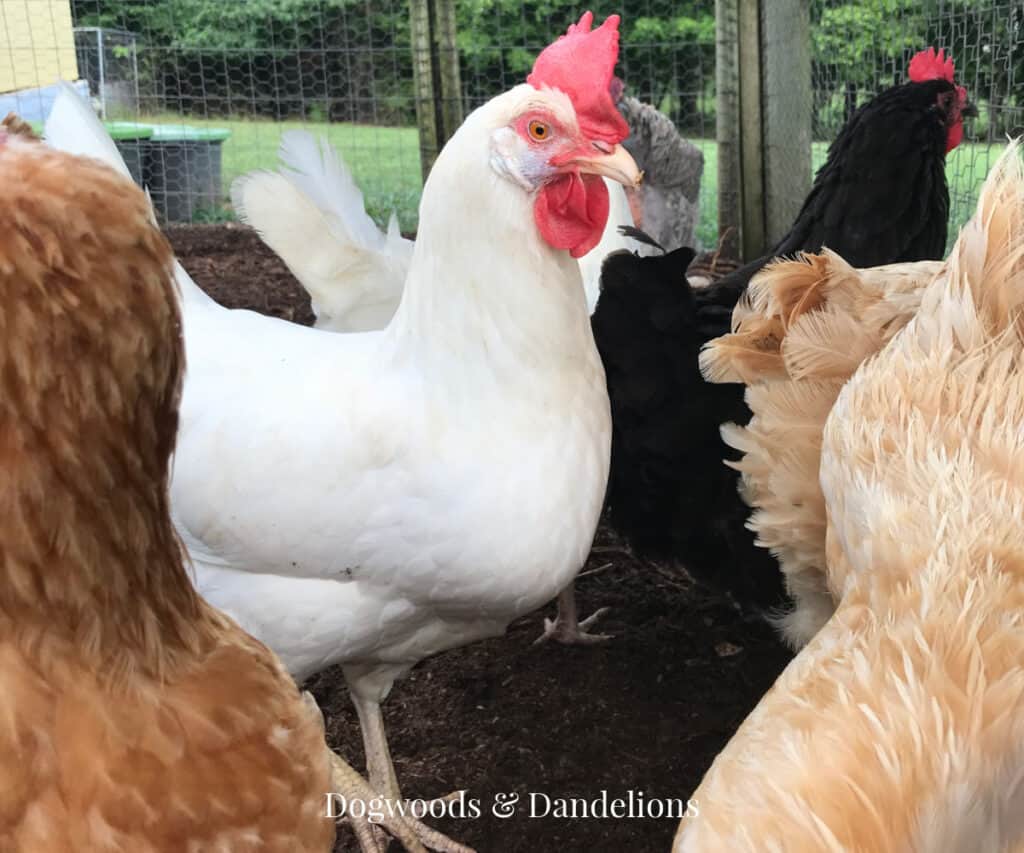
The White Leghorn breed is considered the gold standard for laying hens. This breed will lay between 280 and 320+ eggs per year and typically will lay well into their third and fourth years of life.
Leghorns are high-energy birds that like to keep busy. While some say they aren’t good foragers, I found quite the opposite to be true in our flock. Our leghorns were some of the first to find bugs to eat when we allowed them to free range.
Leghorns are smaller birds that don’t tend to eat as much as larger breeds. For this reason, they can save you some money on your feed bill.
They aren’t an extremely friendly breed but aren’t usually aggressive either, so they do well in a mixed flock. If you have cold winters, you may wish to look for a strain that has smaller combs or even pea combs as the leghorns with larger combs are susceptible to frostbite.
If you want a lot of eggs, without a large feed bill, White Leghorns are the breed to choose.
Green Egg Laying Breeds
While there aren’t as many green egg-laying breeds, there are several varieties of chickens that will lay green eggs.
Favaucana
A Favaucana is a hybrid breed that comes from a cross of Faverolles and Ameraucana chickens. They are excellent layers of sage green-colored eggs. This breed tends to be friendly and cold hardy, so they are great hens for the backyard flock.
Favaucana hens lay about 250 eggs per year. The only issue with this breed is that it can be difficult to find chicks. My Pet Chicken sometimes has baby chicks you can purchase.
Isbar
Isbars are a cold-hardy breed that lays between 150 and 200 green eggs per year. They lay green eggs of various shades and some even have brown speckles on a green background.
Isbars tend to be calm, but are fairly alert to predators. They are a great breed for a backyard homestead, but the chicks can be difficult to source and are fairly expensive to purchase.
Olive Egger
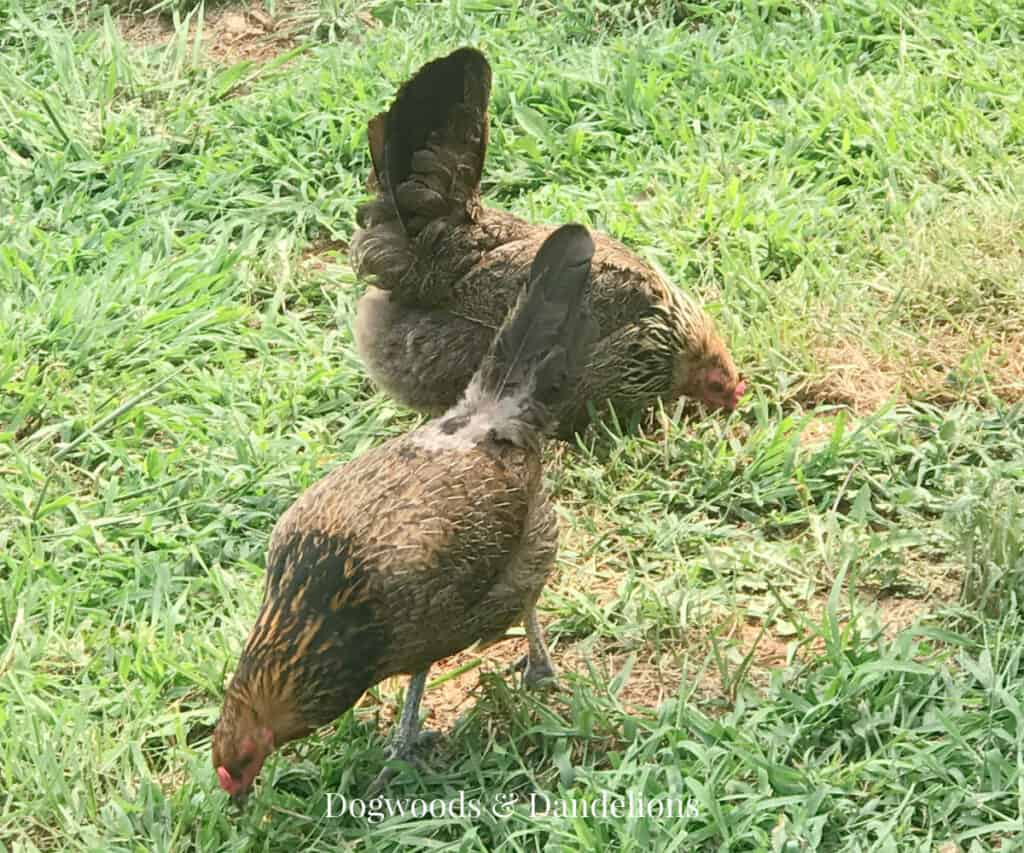
Similar to an Easter Egger that lays blue eggs, the Olive Egger is a cross between a brown egg layer and a blue egg layer. The resulting egg is
Olive Eggers are generally a docile breed with a medium build. There is quite a bit of variety in their appearance largely due to the breeding parents. Some have pea combs, some have muffs. Others will not.
Their feather color will vary widely as well. Olive Eggers lay approximately 150-200 eggs per year. They are both cold-hardy and heat-tolerant so they make a great backyard chicken.
Because of their breeding, you may occasionally get an Olive Egger hen that lays pink, blue, or brown eggs instead of green.
For More Information
If you want more information on any of these breeds, I’ve found 2 great resources.
The Livestock Conservancy is great for researching heritage breeds and breeds that may be on the decline.
The Happy Chicken Coop is a great resource for learning more about the history of each chicken breed as well as in-depth knowledge about the temperament and health issues of various breeds.
Choosing a variety of breeds is a good plan for your backyard flock. By choosing a mix of breeds, you can have fresh eggs with a variety of colors and chickens with different personalities.

Meet Julie
I’m a farm girl born and bred in North Carolina. I’ve been growing a vegetable garden for over 20 years (and helping my Mom grow hers even longer). I’ve been raising chickens in my bathtub and backyard for 12+ years. I believe that homegrown food can be made simple. Let’s get started.
I would love it if you would pin this for later:

Related Posts
- Friendliest Chicken Breeds to add to your backyard flock.
- How many chickens do I need for fresh eggs?
- Want to name your chickens? Here are lots of chicken names for your flock.

